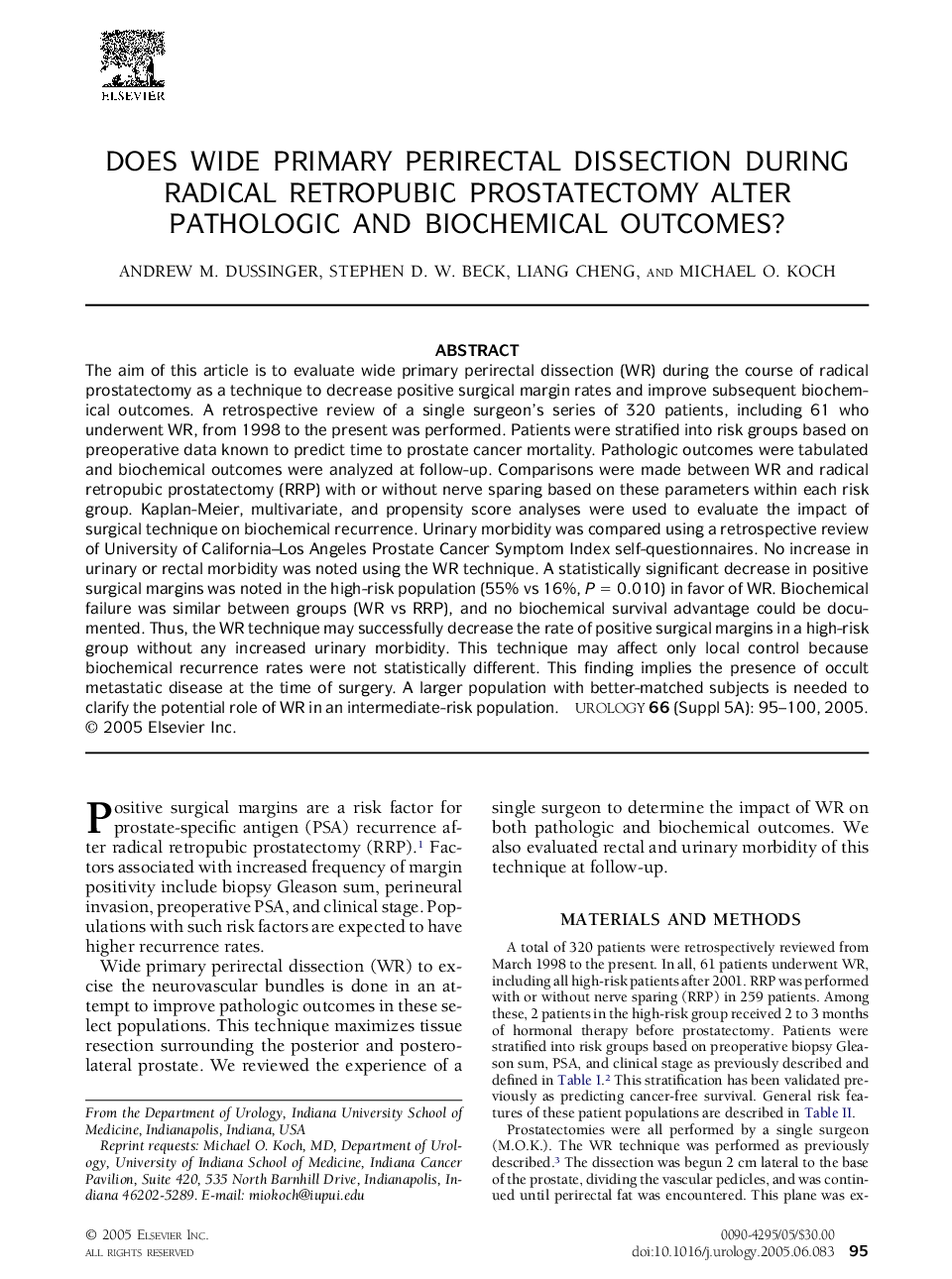| کد مقاله | کد نشریه | سال انتشار | مقاله انگلیسی | نسخه تمام متن |
|---|---|---|---|---|
| 9312958 | 1250465 | 2005 | 6 صفحه PDF | دانلود رایگان |
عنوان انگلیسی مقاله ISI
Does wide primary perirectal dissection during radical retropubic prostatectomy alter pathologic and biochemical outcomes?
دانلود مقاله + سفارش ترجمه
دانلود مقاله ISI انگلیسی
رایگان برای ایرانیان
موضوعات مرتبط
علوم پزشکی و سلامت
پزشکی و دندانپزشکی
بیماریهای کلیوی
پیش نمایش صفحه اول مقاله

چکیده انگلیسی
The aim of this article is to evaluate wide primary perirectal dissection (WR) during the course of radical prostatectomy as a technique to decrease positive surgical margin rates and improve subsequent biochemical outcomes. A retrospective review of a single surgeon's series of 320 patients, including 61 who underwent WR, from 1998 to the present was performed. Patients were stratified into risk groups based on preoperative data known to predict time to prostate cancer mortality. Pathologic outcomes were tabulated and biochemical outcomes were analyzed at follow-up. Comparisons were made between WR and radical retropubic prostatectomy (RRP) with or without nerve sparing based on these parameters within each risk group. Kaplan-Meier, multivariate, and propensity score analyses were used to evaluate the impact of surgical technique on biochemical recurrence. Urinary morbidity was compared using a retrospective review of University of California-Los Angeles Prostate Cancer Symptom Index self-questionnaires. No increase in urinary or rectal morbidity was noted using the WR technique. A statistically significant decrease in positive surgical margins was noted in the high-risk population (55% vs 16%, P = 0.010) in favor of WR. Biochemical failure was similar between groups (WR vs RRP), and no biochemical survival advantage could be documented. Thus, the WR technique may successfully decrease the rate of positive surgical margins in a high-risk group without any increased urinary morbidity. This technique may affect only local control because biochemical recurrence rates were not statistically different. This finding implies the presence of occult metastatic disease at the time of surgery. A larger population with better-matched subjects is needed to clarify the potential role of WR in an intermediate-risk population.
ناشر
Database: Elsevier - ScienceDirect (ساینس دایرکت)
Journal: Urology - Volume 66, Issue 5, Supplement, November 2005, Pages 95-100
Journal: Urology - Volume 66, Issue 5, Supplement, November 2005, Pages 95-100
نویسندگان
Andrew M. Dussinger, Stephen D.W. Beck, Liang Cheng, Michael O. Koch,